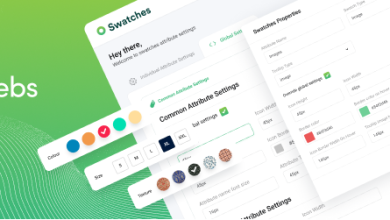Using the best applicant tracking systems to redefine recruitment

The number of organizations using technology to manage human resource activities and processes is growing steadily. Applicant tracking systems are proving to be a popular software program. HR teams may be hesitant to automate recruitment because it is perceived as being time-consuming and administratively heavy. success depends upon recruitment.
Let’s discuss what an applicant tracking system is and some of the key benefits you can gain from using one.
How does an applicant tracking system work?
ATSs are tools that assist employers in managing the entire recruitment process from start to finish. Posting job ads, evaluating potential candidates, tracking interview processes, evaluating candidate performance, and sending out job offers are all possible through an ATS. ATSs offer customizable reports and insights that speed up and improve decision-making.
Employers can send automated emails to candidates informing them that their applications have been received, and they can also schedule interviews or email rejection letters.
An application tracking system has many advantages, including:
- Streamlines the recruitment process from beginning to end
- Provides a better candidate experience
- Hires more qualified candidates
- Multiple platforms can be posted with a single click
- Schedules interviews seamlessly
- Increases employer brand awareness
The applicant tracking system market has many different types. From software designed to be simple and accessible to more advanced and comprehensive systems that effectively handle recruiting activities from start to finish, these programs come in all shapes and sizes.
Choosing an applicant tracking system: things to keep in mind
We’ll talk about specific features your ATS should have later in this article to provide the most value for your business. Choosing when to invest in an ATS should consider some additional factors in addition to such features.
What are the pricing options offered by the applicant tracking system?
You may pay a set monthly price or charge per user. The latter might be fairer and allow you to budget better. As an added bonus, you will not have to pay more in the future if your business expands.
What is the structure of the implementation period?
It is a very important area to consider, as complex and long-winded setups can eat up time, resources, and money. Since your business likely already has data that needs to transfer to the new platform, data migration is usually an important consideration. If the implementation process involves additional costs, they should clearly outline ahead of time. In addition, make sure you clearly explain the training strategy, including how HR personnel will train and what ongoing support they will receive.
Are you able to grow your business with the system?
You should choose recruitment software that is in line with your business needs, such as its size, your budget, the features you’ll find most valuable, etc. Take a moment to look to the future, and then make a calculated assessment of what your needs will be then. It will save you time, inconvenience, and money if you choose an ATS that can grow with your business.
A tracking system for applicants offers tangible benefits
A robust applicant tracking system for your business has many benefits, but the following three are the most important.
The hiring of new employees will take less time
From the time it is scoped out and approved to the time a job offer is made to a successful candidate, this metric measures the time it takes to recruit for an open role.
The recruitment process and tasks spread between multiple parties, including line managers, HR departments, recruitment agencies, and candidates themselves. Laborious manual activities like cross-checking CVs or scheduling interviews are part of this. Many of these processes can automate, thus speeding up these parts of the process noticeably. The use of pre-built keyword matches to screen CVs, for example, is an effective way to determine quickly if applicants are fast, accurate, and effective.
The cost of hiring is lower
An advantage of using an applicant tracking system is that the average cost per hire may reduce. As a result, new employees will have to recruit and select for less money.
This is due to a number of reasons. The biggest benefit is related to the point above and the fact that the whole process takes less time, with fewer man-hours being spent doing manual work. Creating and maintaining talent pools of suitable candidates for future vacancies can also help reduce recruitment costs. It is no longer necessary to start the recruitment process from scratch each time a new position becomes available. The recruitment budget can allocate to the most cost-efficient hiring methods to get the best results.
The quality of hires has improved
Additionally, an applicant tracking system can have a noticeable impact on the quality of candidates you recruit. In a competitive recruitment market, one of the benefits of demo ats is that you can quickly attract and target the best candidates by speeding up the entire hiring process. In addition, automated system features, such as slick questionnaires, can enhance the engagement of your best candidates.




